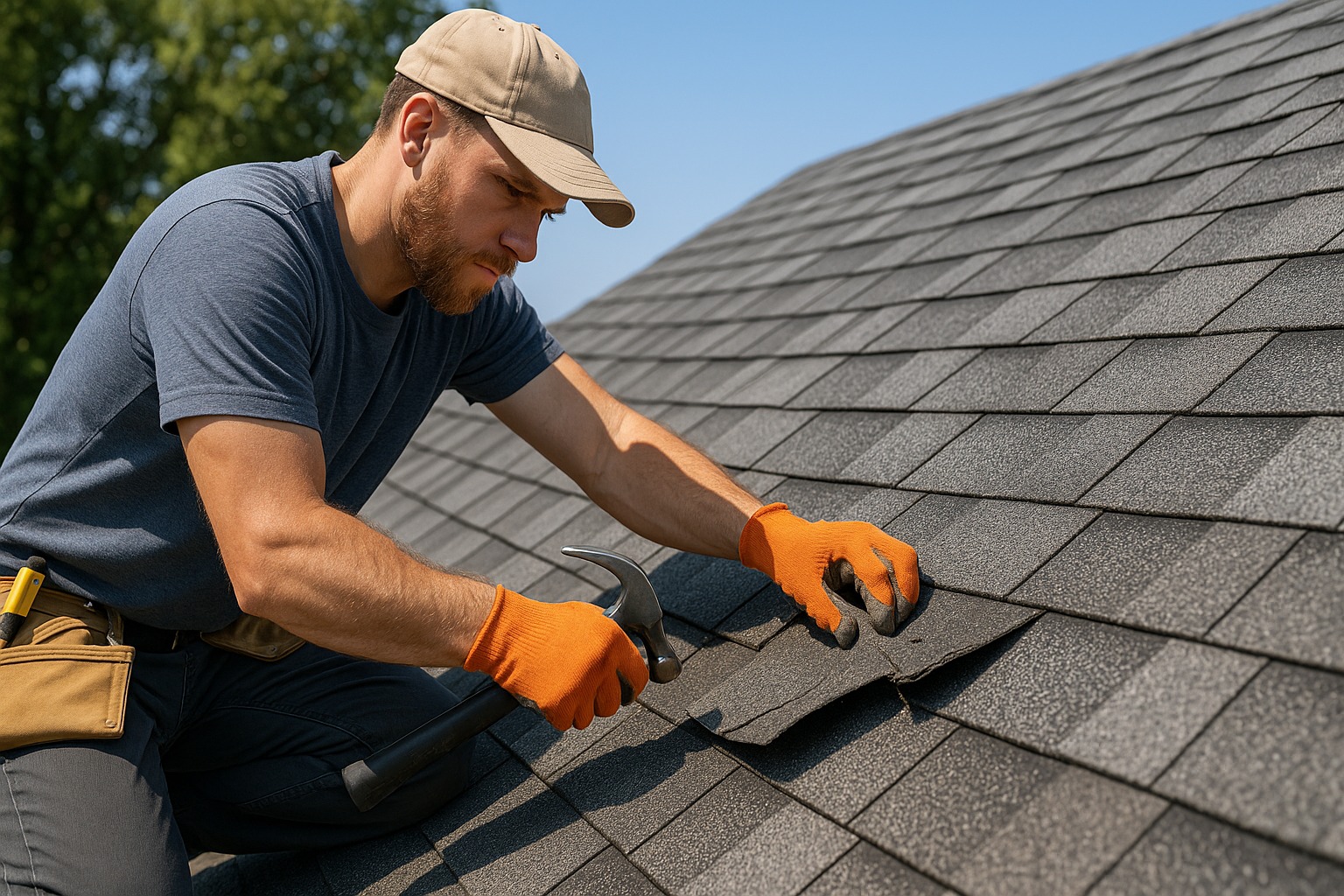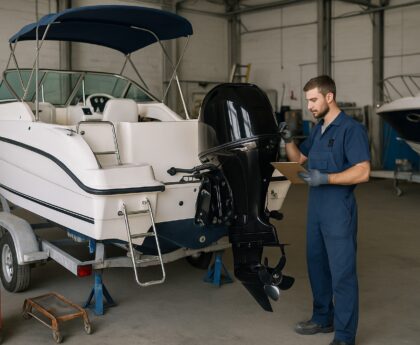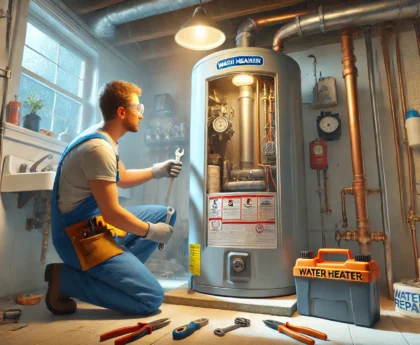When your roof starts showing signs of trouble — like a small leak, missing shingles, or water stains spreading across the ceiling — the very first question that comes to mind is usually, how much will it cost to repair my roof? It’s a valid concern because roof problems never stay small for long. Ignoring them can quickly lead to bigger issues such as mold, rotten wood, or even structural damage inside your home.
Understanding the cost of roof repair gives homeowners more than just peace of mind. It helps you budget properly, avoid being overcharged, and make smart choices about whether to repair or replace your roof. More importantly, it prevents damage escalation, which saves money and protects the long-term value of your property. For anyone planning to sell their home in the future, a well-maintained roof is also a major factor in boosting resale value.
On average, roof repair costs in 2025 can range widely depending on the problem. A minor repair, like patching a small leak or replacing a few shingles, may cost around $500–$1,000. More serious repairs involving large sections, flashing issues, or structural damage can easily climb to $3,000–$8,000 or more. These numbers set the baseline, but the real cost depends on the size of your roof, the materials used, and the complexity of the repair.
This guide will walk you through the different factors that influence cost, how to know when repair makes sense versus when a full replacement is smarter, and practical tips to save money without cutting corners. By the end, you’ll have a clear, expert-backed understanding of how much to repair a roof in today’s market.
- Understanding Roof Repair Vs Roof Replacement
- Average Roof Repair Costs In 2025
- Cost Per Square Foot And Price By Roofing Material
- Common Types Of Roof Repairs And Their Cost Ranges
- Factors That Influence Roof Repair Cost
- Repair Vs Replacement: Which Makes Sense And When
- How To Estimate Repair Costs For Your Roof
- Ways To Save Money Without Sacrificing Quality
- Hidden Costs And Potential Pitfalls
- Real Examples Of Roof Repair Costs
- Conclusion
Understanding Roof Repair Vs Roof Replacement
Not every roofing issue requires a full roof replacement. In many cases, a roof repair means addressing small, localized problems — such as replacing a few missing shingles, sealing flashing around a chimney, or patching a leak near a vent. These fixes are targeted and cost-effective, especially when the rest of the roof is in good condition.
A roof replacement, on the other hand, involves removing the entire old roof and installing new materials across the whole surface. This is a major investment, but it makes sense when repairs are no longer enough to keep your home protected.
So how do you know which option is right for you? Age is one of the biggest indicators. If your roof is nearing the end of its expected lifespan — usually 15 to 25 years for asphalt shingles and longer for metal or tile roofs — frequent repairs may just be putting a bandage on a bigger issue. In such cases, the cost of multiple repairs can quickly add up to the price of a replacement.
To give some perspective, roof replacement costs in 2025 can range anywhere from $8,000 to $25,000 or more, depending on the size of the home and materials chosen. By contrast, most repairs fall between $500 and $3,000. If you find yourself repairing the roof every season, it’s often smarter financially to invest in a new roof rather than spending thousands on repeated fixes.
Roofing experts often advise homeowners to weigh the “50% rule”: if the cost of repairs is approaching half the cost of a new roof, replacement is usually the better long-term decision. This approach ensures that money is spent wisely and your home stays protected for decades, not just a few more years.
Average Roof Repair Costs In 2025
Roof repair costs in 2025 vary widely, but having a realistic range in mind helps you prepare before calling contractors. On the lower end, small fixes such as sealing a minor leak, replacing a few missing shingles, or patching flashing typically cost between $300 and $1,000. These are quick jobs that don’t require much labor or material, making them affordable for most homeowners.
For mid-range repairs, which may include fixing multiple leaks, replacing sections of shingles, or addressing damage around vents and skylights, the cost usually falls between $1,000 and $3,000. These repairs often take more time and may involve specialized materials, but they are still far less expensive than a full roof replacement.
When the damage is more serious — such as sagging roof decking, widespread water intrusion, or structural issues — repairs can easily reach $3,000 to $8,000 or more. At this level, the job may require not just surface repairs but also replacing underlying wood or reinforcing structural supports. Costs also climb if scaffolding or additional safety measures are needed.
It’s important to remember that averages can be misleading because location, labor rates, and roof complexity make a big difference. A roof repair in a major city with high labor costs may be twice as expensive as the same repair in a smaller town. Similarly, a steep or multi-level roof is more difficult to access and repair, which drives up labor costs.
For homeowners trying to budget, roofing experts recommend setting aside at least $1,000 to $2,000 for standard repairs, while keeping in mind that severe damage can be much higher. Having this range in mind ensures you won’t be caught off guard when estimates come in.
Cost Per Square Foot And Price By Roofing Material
One of the most accurate ways to estimate roof repair costs is by looking at the price per square foot. Roofers often calculate labor and material costs this way, especially for larger repairs or partial replacements. On average, homeowners can expect to pay $4 to $10 per square foot for repairs, though this range changes depending on the material and complexity of the job.
Asphalt shingles, the most common roofing material, are also the most affordable to repair. Repairs typically cost around $4 to $8 per square foot, making them budget-friendly and widely available. Metal roofing, while longer-lasting, is more expensive to repair because it requires special tools and expertise. Repairing metal can range from $7 to $15 per square foot.
Tile and slate roofs are the most costly to repair. Tile repairs often run between $8 and $20 per square foot, while slate can exceed $15 to $25 per square foot, especially if matching the existing material is difficult. These materials are heavy, fragile, and require skilled labor, which drives up both time and cost.
Roof slope and design also matter. A steep roof or one with multiple valleys, dormers, or skylights increases the repair cost per square foot because of the extra labor and safety measures required. Flat roofs are generally easier and cheaper to repair per square foot, though specialized membranes (like TPO or EPDM) come with their own material costs.
For homeowners trying to compare repair vs replacement, this per-square-foot method is especially useful. While minor repairs might only involve a few feet, larger issues can add up quickly. At some point, the per-square-foot cost of repairs may approach that of a full replacement, which can make replacement the smarter financial move in the long run.
Common Types Of Roof Repairs And Their Cost Ranges
Every roof problem is different, and so are the costs to fix them. Understanding the most common repair types helps you know what to expect when calling a roofer.
Small Roof Leak Repairs
The most common issue homeowners face is a leak. A small roof leak, often caused by worn flashing, cracked shingles, or poor sealing around vents, can cost anywhere from $300 to $1,000 to fix. The price depends on how easy it is to locate the leak and whether there’s hidden water damage underneath.
Shingle Replacement
Missing, cracked, or curled shingles are another frequent repair. Replacing a handful of shingles might cost only $150 to $500, but if an entire section of the roof is damaged, costs can climb into the $1,000–$2,000 range. Matching the color and style of existing shingles may also affect the price.
Flashing Repairs
Flashing is the thin metal that seals areas around chimneys, skylights, valleys, and vents. When flashing rusts, cracks, or loosens, leaks are almost guaranteed. Flashing repairs usually cost between $400 and $1,500, depending on the size of the area and accessibility.
Vent, Pipe Boot, And Skylight Repairs
Roof penetrations are weak spots where leaks often develop. Replacing or resealing a pipe boot may cost $200–$600, while repairing leaks around skylights or ridge vents typically falls in the $500–$1,500 range.
Structural Repairs
When water has seeped in for too long, the underlying wood decking or support beams can weaken or rot. These repairs are much more serious, with costs starting at $2,000 and reaching $8,000 or more, depending on how much of the structure needs replacement.
Gutter And Drainage Issues
Sometimes the roof itself isn’t the problem — clogged gutters or poor drainage cause water to back up under the shingles. Cleaning and repairing gutters can range from $150 to $500, while replacing sections of damaged fascia boards can add to the bill.
Each repair type varies, but one rule holds true: the sooner you catch the problem, the less you’ll spend. A $400 leak repair today can easily become a $4,000 structural repair if ignored.
Factors That Influence Roof Repair Cost
No two roof repair jobs are ever priced the same, because several factors come into play. Knowing these variables helps you understand why one contractor’s quote might look very different from another’s.
Roof size And slope
Larger roofs naturally cost more to repair because they require more materials and labor. The slope, or steepness, also plays a big role. A steep roof is harder and riskier to work on, so contractors charge extra for the additional safety equipment and time required.
Roofing material
The type of roof you have directly affects the repair price. Asphalt shingles are the cheapest to fix, while tile, slate, and metal roofs demand higher prices because they require specialized skills and harder-to-source materials.
Extent Of The Damage
A small patch or a few missing shingles costs far less than widespread water damage or structural repairs. Sometimes roofers discover hidden problems, like rotten decking or mold, once they open up the roof — which can quickly add thousands to the final bill.
Labor And location
Labor rates differ from one region to another. Roof repairs in big cities or areas with high demand usually cost more than in smaller towns. Seasonal factors matter too — scheduling repairs during storm season or winter can push prices higher because of demand and safety concerns.
Accessibility
If your roof is difficult to access — for example, multi-level homes, homes surrounded by trees, or roofs that require scaffolding — labor costs will increase. Easy, single-story homes with simple access tend to be cheaper to repair.
Permits And additional services
In some areas, even small roof repairs require permits or inspections, adding extra fees. Other add-ons like gutter cleaning, disposal of old materials, or applying protective sealants can also influence the total price.
All these factors combined make roof repair estimates highly variable. That’s why roofing experts recommend getting at least three quotes from licensed contractors before making a decision. This way, you’ll have a clear picture of whether you’re being offered a fair deal.
Repair Vs Replacement: Which Makes Sense And When
One of the biggest decisions homeowners face is whether to repair the roof or replace it entirely. While repairs are often the cheaper short-term solution, they aren’t always the most cost-effective in the long run.
If your roof is relatively new and the damage is limited — such as a few missing shingles, a small leak, or a minor flashing issue — repair is usually the right choice. These fixes are straightforward and can extend the life of your roof without requiring a major investment.
However, if your roof is nearing the end of its lifespan, frequent repairs may just be throwing money away. For example, asphalt shingles typically last 15 to 25 years, while metal and tile can last much longer. If your roof is within a few years of its expected replacement age, it often makes more sense to invest in a full roof replacement instead of paying for repeated fixes.
Cost is another deciding factor. As a rule of thumb, if the cost of repairs approaches 50% or more of the cost of a new roof, replacement becomes the smarter option. A replacement may seem expensive upfront — often ranging between $8,000 and $25,000 depending on size and material — but it saves you from paying thousands repeatedly for ongoing problems.
Beyond cost, safety and resale value also matter. A new roof not only protects your home from leaks and structural damage but also boosts curb appeal and can increase your home’s value if you plan to sell. For families, especially those with young children, a reliable roof provides peace of mind that your home is safe and secure.
In short, repair is best for small, isolated problems, while replacement is the long-term solution when age, condition, or frequent damage makes repairs less practical.
How To Estimate Repair Costs For Your Roof
Getting an accurate estimate for roof repair isn’t always simple, but there are a few steps you can take to get a realistic idea before signing a contract.
The first step is to inspect the roof yourself. From the ground, look for visible signs like missing shingles, sagging spots, or water stains under the eaves. Inside the attic, check for moisture, mold, or sunlight peeking through. While this won’t replace a professional inspection, it gives you a sense of how serious the damage may be.
Next, try to measure the affected area. Roofing contractors usually price jobs by square footage. Knowing the approximate size of the damaged section will help you compare quotes more accurately. For example, patching a 50-square-foot section of asphalt shingles costs far less than repairing a 200-square-foot section of tile.
Once you’ve gathered basic information, reach out to at least three licensed roofing contractors. Ask each one to provide a written estimate that clearly breaks down materials, labor, permits, and disposal fees. This not only helps you avoid hidden costs but also gives you leverage to compare and negotiate.
You can also use online roof cost calculators as a starting point. Many reliable tools let you enter your zip code, roof size, material type, and type of damage to get a ballpark estimate. While these calculators are helpful, remember they can’t account for hidden damage a professional might find once the work begins.
Finally, consider whether your homeowner’s insurance might cover part of the repair. If the damage was caused by a storm, hail, or fallen tree, you may only need to pay the deductible. However, insurance rarely covers normal wear and tear, so check your policy details carefully.
By combining a self-inspection, contractor quotes, and insurance review, you can build a realistic estimate that prevents surprises and helps you budget confidently.
Ways To Save Money Without Sacrificing Quality
Roof repairs can be expensive, but there are smart strategies to keep costs under control without cutting corners. The key is balancing affordability with long-term protection.
One of the simplest ways to save money is through regular roof maintenance. Scheduling annual or biannual inspections allows small problems to be caught early, before they turn into major repairs. Cleaning gutters, checking flashing, and trimming overhanging branches are low-cost tasks that extend your roof’s lifespan.
Another tip is to bundle repairs whenever possible. If you already need shingles replaced, consider adding flashing or vent boot repairs at the same time. Contractors often charge less per task when multiple jobs are combined into one visit, saving you on labor costs.
Timing also matters. Scheduling work during off-peak seasons can reduce costs since contractors may offer discounts to keep their crews busy. Spring and fall are typically the busiest times, so asking for quotes in late winter or mid-summer can sometimes result in better pricing.
Choosing the right materials is another cost-saving opportunity. While premium shingles or specialty tiles look attractive, they may not always provide the best return on investment for your home’s value. In many cases, high-quality asphalt shingles strike the right balance between durability and affordability.
Finally, compare multiple quotes from licensed contractors instead of going with the first bid. A detailed estimate helps you identify hidden charges and ensures you’re paying a fair price. Don’t be afraid to ask questions about warranties, materials, and repair methods — transparency is a sign of a trustworthy roofer.
Saving money doesn’t mean hiring the cheapest option or skipping necessary repairs. It means being proactive, informed, and strategic so you get lasting value without overspending.
Hidden Costs And Potential Pitfalls
When budgeting for a roof repair, most homeowners focus only on the quoted price for materials and labor. However, there are often hidden costs that can surprise you once the work begins. Knowing these in advance helps you avoid unpleasant financial shocks.
One of the most common hidden expenses comes from unseen damage. A small leak may look simple from the outside, but once the roofer opens up the area, they may find rotten decking, mold, or weakened rafters. These structural repairs can add thousands of dollars to your bill.
Permit fees and inspections are another factor. Depending on where you live, even small roof repairs may require permits from the local building authority. These fees are usually not included in the initial quote unless you specifically ask.
Matching existing materials can also be tricky. Shingle colors and styles often get discontinued over time. If your roof is older, finding a perfect match for a few missing shingles might be impossible, leading to extra costs for partial re-roofing to maintain a consistent look.
Another pitfall is poor workmanship or quick fixes. Some contractors may offer unusually low bids but use low-quality materials or skip proper sealing and ventilation steps. This can cause leaks to reappear within months, forcing you to pay twice for the same problem.
Finally, don’t overlook cleanup and disposal costs. Removing old shingles, flashing, or decking requires hauling and landfill fees, which can add a few hundred dollars to the total repair bill.
The best way to avoid these pitfalls is to hire a licensed, reputable roofer and insist on a detailed written estimate that outlines all potential costs. Clear communication and careful planning prevent budget surprises and ensure the repair actually lasts.
Real Examples Of Roof Repair Costs
Sometimes numbers on a page don’t feel real until you see how they play out in actual homes. Here are a few examples that show the wide range of roof repair situations and what they really cost.
Case 1: Small Leak Around A Vent
A homeowner noticed a small water stain in their bedroom ceiling. After inspection, the roofer found that the rubber boot around a vent pipe had cracked. The repair involved replacing the boot and sealing the area, costing about $450. Since the problem was caught early, there was no underlying wood damage.
Case 2: Missing Shingles After A Storm
Strong winds blew off several shingles from a two-story home. The roofer replaced the missing shingles, checked the surrounding areas for loosened ones, and resealed the flashing. The total cost came to around $1,200. The homeowner’s insurance covered most of it, leaving only the deductible to pay.
Case 3: Structural Decking Damage
A family ignored a persistent leak near their chimney for several months. By the time they called a roofer, water had rotted a section of the plywood decking. Repairing the leak, replacing the flashing, and replacing damaged wood raised the bill to about $5,500. In this case, delaying repairs significantly increased the final cost.
Case 4: Near-End-Of-life Roof
An older roof with asphalt shingles kept developing leaks in different areas. Over two years, the homeowner spent nearly $6,000 on patchwork repairs. Eventually, they replaced the entire roof at a cost of $14,500. Looking back, they realized that replacing earlier would have saved them money and stress.
These real-world examples show why acting quickly on small repairs is so important. They also highlight the financial tipping point where replacement becomes more practical than repair.
Conclusion
Roof repair costs can vary greatly, but understanding the factors involved helps homeowners make smarter decisions. Small issues like leaks or missing shingles may cost only a few hundred dollars to fix, while structural damage or widespread problems can quickly reach several thousand. By knowing the average costs, what influences pricing, and when replacement makes more sense, you can budget wisely and avoid being caught off guard. Acting early on small problems is always the most cost-effective approach.
At the end of the day, your roof is one of the most important parts of your home’s protection. Whether you’re repairing a minor leak or weighing the cost of a full replacement, investing in proper roof care not only safeguards your property but also adds long-term value. With the right information, trusted contractors, and timely action, you can handle roof repairs confidently and ensure your home stays safe and secure for years to come.
FAQ’s:
How Much Does A Minor Roof Repair Cost?
Minor repairs such as sealing a small leak, replacing a few shingles, or fixing a vent boot usually cost between $300 and $800. These are quick fixes that don’t require extensive labor.
What Is The Cost Of Repairing A Large Section Of Roof?
If you’re dealing with multiple leaks, damaged flashing, or a bigger repair area, expect to pay anywhere from $1,500 to $5,000. The final price depends on the size of the section, material type, and labor costs in your area.
Is Roof Repair Cheaper Than Replacement In The Long Run?
In the short term, repairs are always cheaper. But if your roof is nearing the end of its life or if you’re spending thousands every year on patchwork, replacement can save more in the long run. As a rule of thumb, if repairs cost more than half of a new roof, replacement is often smarter.
Will Homeowners Insurance Cover Roof Repair?
Insurance usually covers repairs caused by sudden events like storms, hail, or fallen trees. Normal wear and tear, however, is not covered. Always check your policy before filing a claim.
How Often Should I Repair Or Replace My Roof?
Repairs should be done immediately whenever damage is noticed. As for replacement, asphalt shingle roofs typically last 15–25 years, metal roofs can last 40–70 years, and tile or slate can last even longer with proper care. Regular inspections help you decide when it’s time.
Can I Repair My Roof Myself?
DIY repairs may seem cheaper, but they come with risks. Without proper tools and safety gear, working on a roof can be dangerous. Plus, mistakes can cause more damage or void warranties. For small tasks like gutter cleaning or spotting missing shingles, DIY is fine, but major repairs should be left to licensed professionals.
Thank you for visiting our Blog! For more engaging content, please check out the related category.
Disclaimer:
The cost estimates and information provided in this article are for general guidance only and may vary based on location, roofing material, and individual contractor rates. Always consult a licensed roofing professional for an accurate inspection and repair quote.





